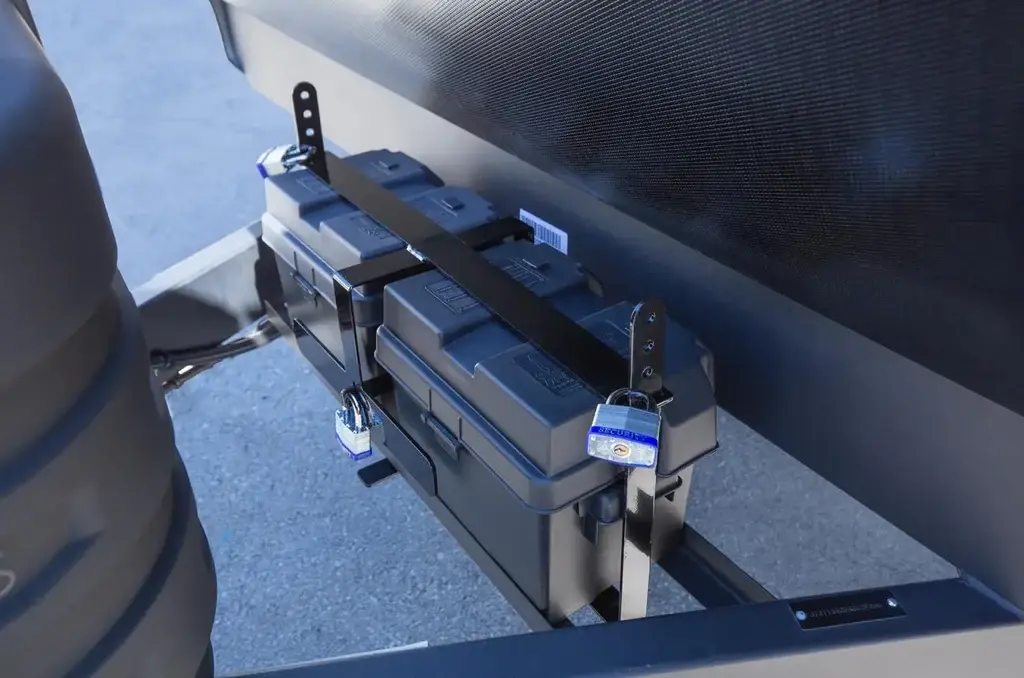Storing batteries properly during camping trips isn’t just about convenience—it’s about safety and preventing damage to expensive equipment. Battery boxes serve multiple functions: physical protection from impacts and moisture, containment of potential acid spills or off-gassing, thermal insulation, and organized connection points for charging and loads. The material choice affects durability and weight, with high-density polyethylene and polypropylene being common for their impact resistance and chemical inertness. Ventilation design matters significantly because batteries release hydrogen gas during charging, which is explosive in confined spaces, so proper venting channels and placement are critical safety features.
Material Properties That Matter in Real Conditions
Most quality battery boxes use HDPE (high-density polyethylene) or polypropylene because these plastics maintain structural integrity across wide temperature ranges. HDPE stays flexible down to -40°C and doesn’t become brittle, which matters when you’re camping in cold weather and might drop the box while setting up.
UV resistance is a big deal if your battery box sits outside or in direct sunlight. UV degradation causes plastic to become chalky and brittle over time. Look for boxes with UV stabilizers molded into the plastic—these typically have a slightly matte finish rather than shiny. A good test is checking if the manufacturer rates the box for outdoor use.
Wall thickness tells you about structural strength. Budget boxes might use 3-4mm walls that flex and crack easily. Quality units use 5-8mm walls, sometimes with ribbed reinforcement patterns that add stiffness without extra weight. I’ve seen thin-walled boxes crack just from the vibration of driving on rough roads.
Chemical resistance matters more than you’d think. Batteries leak sometimes, and sulfuric acid eats through materials that aren’t specifically resistant to it. HDPE and polypropylene are both excellent acid barriers, but some cheaper plastics used in low-end boxes will corrode over time.
Ventilation Design for Safe Gas Release
Lead-acid batteries release hydrogen gas during charging, especially during the bulk charging phase when current is highest. Hydrogen is lighter than air and explosive at concentrations above 4%. Sealed battery boxes without ventilation are genuinely dangerous—I’m not exaggerating here.
Proper ventilation uses strategically placed vents that allow gas to escape while preventing water and dust ingress. Top vents work with natural convection since hydrogen rises, but you also need lower vents for air intake to create circulation. The vent holes should be baffled or use membrane filters that let gas through but block water.
Vent sizing matters too. A rough calculation: for every 100Ah of battery capacity being charged at 10% of capacity (10A for a 100Ah battery), you need minimum 50cm² of vent area. More is better, but you’re balancing ventilation against keeping the interior protected from elements.
Some battery boxes use forced ventilation with small DC fans that run whenever the battery is charging. This actively removes hydrogen and keeps the battery cooler, which extends life. For lithium batteries that don’t off-gas during normal operation, ventilation is less critical but still useful for heat management.
Mounting and Securing Systems
A loose battery box becomes a dangerous projectile in a vehicle accident or even during hard off-road driving. The securing system needs to handle the weight—a 100Ah AGM battery weighs about 30kg, and in a crash that can generate forces of 20-50G, meaning effective weight of 600-1500kg trying to break free.
Tie-down straps should be minimum 25mm wide with metal buckles rated for at least 500kg working load. The attachment points on the box need to be reinforced areas, not just holes drilled through the regular wall material. Look for boxes with molded-in mounting lugs or metal inserts.
Floor mounting requires proper load distribution. Bolting directly to vehicle sheet metal concentrates stress on small areas that can tear. Use backing plates or mount to structural members like chassis rails. For slide-out trays, the rails need to be rated for dynamic loads, not just static weight.
Some boxes include rubber isolation mounts that reduce vibration transmission to the battery. This is more important than it seems—constant vibration can crack battery plates internally and shorten lifespan by 30-40%. The isolation mounts need to be stiff enough to prevent the battery bouncing around but soft enough to absorb road shock.
Connection Management and Accessibility
The best battery box designs include organized terminal access through the lid or side panels. Having to remove the entire lid to connect or disconnect anything is inconvenient and exposes the battery unnecessarily. Cutouts or pass-throughs with rubber grommets protect cables from abrasion while maintaining weather sealing.
Built-in busbar systems are incredibly useful for managing multiple connections cleanly. Rather than stacking ring terminals on the battery posts (which creates resistance and heat), a busbar provides multiple connection points at the same electrical potential. Look for copper or brass busbars, not aluminum which oxidizes and creates resistance.
Cable entry grommets need proper sizing. Too small and they pinch cables, potentially damaging insulation. Too large and they don’t seal properly. The
Also Read-Home Selling Tips for Every Situation











